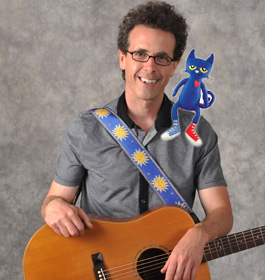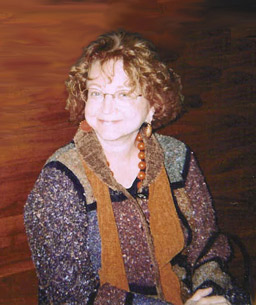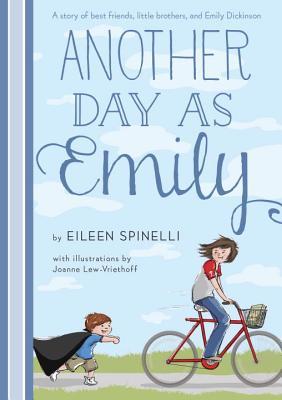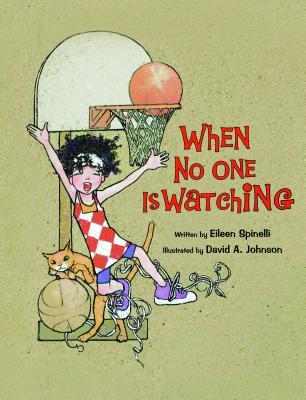by Teresa Villegas co-author and illustrator of children’s book “How We Became a Family”
 Talking with children about difficult topics (such as sex, birth, death, war, politics, etc.) doesn’t have to be so difficult, if you have already established an open style of communication with your child. What exactly is an “open style of communication” and how to achieve this?
Talking with children about difficult topics (such as sex, birth, death, war, politics, etc.) doesn’t have to be so difficult, if you have already established an open style of communication with your child. What exactly is an “open style of communication” and how to achieve this?
Well, it turns out that it’s basically the same kind of communication style that you would have with anyone; adult or child, relative or friend. And it’s founded on a handful of common courtesies: listening, respect, empathy and love.
Open positive communication with children means paying attention by listening to them without interruption, respecting the child’s thoughts and feelings, and connecting with them by empathizing with their opinions and views. Love is what binds this all together in how we express ourselves to children and watching the tone of our voice when we speak can either cause the conversation to open or to close.
 Listening and respecting others are pretty much self-evident, and is only a matter of allowing yourself to put them into action. Children learn “active listening skills” from their grade school teachers and keep us reminded of this elementary skill we adults and parents now call “being present.” When we talk to other adults, we can openly challenge that which we do not agree with. However, this approach can stifle a child’s willingness to speak openly. Since their desire is to please us, we need to make sure we do not curtail their emoting by our statements. We need to acknowledge their point of view, and then we can proceed to explain why we believe our point of view.
Listening and respecting others are pretty much self-evident, and is only a matter of allowing yourself to put them into action. Children learn “active listening skills” from their grade school teachers and keep us reminded of this elementary skill we adults and parents now call “being present.” When we talk to other adults, we can openly challenge that which we do not agree with. However, this approach can stifle a child’s willingness to speak openly. Since their desire is to please us, we need to make sure we do not curtail their emoting by our statements. We need to acknowledge their point of view, and then we can proceed to explain why we believe our point of view.
Empathy can be defined as the ability to feel or imagine another person’s emotional experience. An innate quality we are born with that allows us to make personal and social connections with others and to further the line of our species. Children are closer to their feelings than most adults, and that’s a good thing! We can all respect and understand the feelings of anger, frustration, uncertainty, loss, grief, and joy.
Love and the tone of voice when we are communicating, are not always one and the same. Our tone of voice conveys more to our children than any words. Statements can spill out of our mouths without our realizing how it can sound to a child. Tone of voice and listening were the two skills I immediately noticed and admired when I first met my husband before I knew what he did as a profession. As we became friends, then newlyweds and then as new parents, his listening-skills-training as a psychologist and physician, fostered an open communication style within our relationship and with our children. But you don’t need to be a doctor or married to one to put these skills into use. When attention is given to listening and noticing our projected tone of voice with our responses, we learn a lot about ourselves and how we come across to others with whom we are communicating, especially our children. When we convey patience and serenity in our conversation, it opens up discussion.
same. Our tone of voice conveys more to our children than any words. Statements can spill out of our mouths without our realizing how it can sound to a child. Tone of voice and listening were the two skills I immediately noticed and admired when I first met my husband before I knew what he did as a profession. As we became friends, then newlyweds and then as new parents, his listening-skills-training as a psychologist and physician, fostered an open communication style within our relationship and with our children. But you don’t need to be a doctor or married to one to put these skills into use. When attention is given to listening and noticing our projected tone of voice with our responses, we learn a lot about ourselves and how we come across to others with whom we are communicating, especially our children. When we convey patience and serenity in our conversation, it opens up discussion.
When our children ask us questions and/or interrupt us, our tone of voice may often be saying “what now?”or “can’t this wait?” or “I really don’t know how to answer that” combined with our curt words answering “yes, sure, maybe, no, not now, later, ok?” When I catch myself doing this dance of communication avoidance, especially with  tough questions or topics I’d rather put off for an eternal “another time”, I’m reminded of two thoughts I’d like to share with you. I don’t remember which of the gazillion parenting books or articles where I read these, so I apologize for my failure of referencing the particular sources. Their emphasis on focusing on the moment and their wisdom reached out and grabbed my attention and my heart. They have helped me and have stayed with me to this day. I hope they do the same for you.
tough questions or topics I’d rather put off for an eternal “another time”, I’m reminded of two thoughts I’d like to share with you. I don’t remember which of the gazillion parenting books or articles where I read these, so I apologize for my failure of referencing the particular sources. Their emphasis on focusing on the moment and their wisdom reached out and grabbed my attention and my heart. They have helped me and have stayed with me to this day. I hope they do the same for you.
• Ask yourself “when your child walks into your room, does your face light up? Is your child aware of how important they are to you and how much you value their presence?”
• When you find yourself talking with another person or child, ask yourself
“Is love available here? Can I make space for love to enter into this conversation?”
When I can stop (this is a conscious ongoing process for me), and if I can remind myself of these two concepts above, it helps me to come to center with every tough question or conversation our children bring up and it becomes easier to communicate in an open, honest and authentic way.
One of the toughest topics we are very familiar with and have been talking a lot about 
since our children were born, has to do with how many different ways that families are made. In today’s society, along with the advocacy of open communication and open information on the internet we know that there are many different kinds of families. For some families like ours, it takes more than the traditional concept of family. Sometimes, it takes science and the help of others.
Talking about infertility and how you built your family via IVF and an egg donor or a sperm donor is more accepted now than it was 10 years ago. Awareness is growing. However, it’s still a topic that can be hard to broach with your family, friends, and your children. It is our hope that creating a family with donor assistance will become as common to talk about and accepted in our society as adoption has become.
Within the U.S., more than 10% of all couples suffer from infertility and one in eight couples need medical help to create their families. Fortunately, there are many options with the help of medical science and a donor, but many parents are at a loss to explain this process to their child.
With so few role models to follow, it’s hard to know how to approach this conversation with young children. The following tips will help parents feel comfortable and begin telling their donor-conceived child, how they became a family through science and the help of others.
For more in-depth information please visit our website HowWeBecameaFamily.com.
How To Talk With Your Child About Their Donor Origins
1. Let Go of Your Genetic Dream Family. Acknowledging that you wont be raising a child with yours and your partners’ genes combined is heartbreaking for most couples, and it’s normal to experience this grief – if you allowed it. After experiencing years of infertility, and in your drive to become pregnant, you may have skimmed over or delayed this first crucial step. If you have not begun this subtle, yet necessary step, it may be part of what’s holding you back from feeling ready to talk about it.
2. Define Your Beliefs About Family. Defining what family means to you will strengthen your ability to communicate about how you chose to build your family, should you encounter any negativity about your decisions. Perhaps what you’ve discovered is that love, trust, relationships and support are the foundations that make up a family – not genetics. Understanding how you feel about your choices will make it easier for you to explain them to your child.
3. Affirm The Donor. Regardless of whether you chose to have an open or anonymous relationship with your donor, it’s a good idea to talk with your child about the significance of the donor’s role with appreciation and respect. Children intuitively tune in to your feelings about the donor. Because the donor will forever remain in your awareness, and because how you think and feel about the donor will affect your child, embrace them and celebrate them wholly.
4. Tell Your Child Early. Generally, it is not conception that you want to communicate about as much as the unique path by which your child has entered into your family. Therefore, begin to practice talking about the presence of the other people in that child’s life to whom they may be genetically related, normalize it as it is – a basic fact about their life. “Before you were born, we needed help from a very kind person, for us to make you.”
5. Embrace Your Child’s Curiosity. As your child learns about their donor origins, they may be curious about the donor and wonder and ask questions such as “What are they like?” What do they look like?” As your child grows, they may ask more mature questions such as “Why did they donate?” “Do they have children too?” Research shows that donor conceived people are inquisitive about their donor origins even when they experience positive parent-child relationships. Curiosity will continue and evolve and they will look to you to help them understand it all.
 Using a children’s book to introduce the conversation with your child about their donor conceived beginnings is an easy way to start. The How We Became a Family children’s book series is a welcome relief for parents of children born through IVF with donor conception. There are four versions available depending on your family’s needs. Two versions are for families whose children were conceived with an egg donor, resulting in either a single child, or twins. Two other versions are for families whose children were conceived with a sperm donor, resulting in either a single child, or twins. The books are beautifully designed, with highly-nuanced illustrations with remarkable combinations of depth and whimsy to be read with children ages 2-10. Introduce the conversation with ease by simply reading together. Published by Heart and Mind Press it is now available. Each book is a high quality hardcover children’s picture book with a matte varnish cover, full color, 32 pages of heavyweight uncoated interior pages, 8″x 8″ for parents to read with their child. For more details on how to purchase a book, for your family or as a thoughtful gift, visit HowWeBecameaFamily.com.
Using a children’s book to introduce the conversation with your child about their donor conceived beginnings is an easy way to start. The How We Became a Family children’s book series is a welcome relief for parents of children born through IVF with donor conception. There are four versions available depending on your family’s needs. Two versions are for families whose children were conceived with an egg donor, resulting in either a single child, or twins. Two other versions are for families whose children were conceived with a sperm donor, resulting in either a single child, or twins. The books are beautifully designed, with highly-nuanced illustrations with remarkable combinations of depth and whimsy to be read with children ages 2-10. Introduce the conversation with ease by simply reading together. Published by Heart and Mind Press it is now available. Each book is a high quality hardcover children’s picture book with a matte varnish cover, full color, 32 pages of heavyweight uncoated interior pages, 8″x 8″ for parents to read with their child. For more details on how to purchase a book, for your family or as a thoughtful gift, visit HowWeBecameaFamily.com.




 I was able to connect with Teresa and Bernard through our site’s various communications with authors and illustrators. After reading their book, I felt their story shone a light on a topic that most of us do not typically have a chance to discover, unless of course our lives are touched by this miracle. As a bonus, we also learned some healthy tips on relating to the most important loved ones in our lives.
I was able to connect with Teresa and Bernard through our site’s various communications with authors and illustrators. After reading their book, I felt their story shone a light on a topic that most of us do not typically have a chance to discover, unless of course our lives are touched by this miracle. As a bonus, we also learned some healthy tips on relating to the most important loved ones in our lives.
I want to extend a warm thank you to Teresa for taking a moment to enlighten us today. We wish them love, happiness and continued success with their blessed home and their endeavor to help educate. I encourage you to visit their website and “fill your tool box”.
Lora
 We were ever so fortunate to spend a moment with the entertaining storyteller, musician, teacher and prolific author of the first four Pete the Cat picturebooks, Eric Litwin … Mr. Eric. He is also the author of the new musical series The Nuts.
We were ever so fortunate to spend a moment with the entertaining storyteller, musician, teacher and prolific author of the first four Pete the Cat picturebooks, Eric Litwin … Mr. Eric. He is also the author of the new musical series The Nuts. I grew up in Dobbs Ferry on the Hudson, a small town in the Hudson River Valley. It’s very beautiful there. As a kid I would say I was creative and quiet. I loved to read.
I grew up in Dobbs Ferry on the Hudson, a small town in the Hudson River Valley. It’s very beautiful there. As a kid I would say I was creative and quiet. I loved to read. character created by illustrator James Dean. I felt that this cat and the story of the girl with her white shoes were a good fit. I had a vision to blend early literacy, folk art and music together.
character created by illustrator James Dean. I felt that this cat and the story of the girl with her white shoes were a good fit. I had a vision to blend early literacy, folk art and music together.

 Today is the day.
Today is the day.
 Listening and respecting others are pretty much self-evident, and is only a matter of allowing yourself to put them into action. Children learn “active listening skills” from their grade school teachers and keep us reminded of this elementary skill we adults and parents now call “being present.” When we talk to other adults, we can openly challenge that which we do not agree with. However, this approach can stifle a child’s willingness to speak openly. Since their desire is to please us, we need to make sure we do not curtail their emoting by our statements. We need to acknowledge their point of view, and then we can proceed to explain why we believe our point of view.
Listening and respecting others are pretty much self-evident, and is only a matter of allowing yourself to put them into action. Children learn “active listening skills” from their grade school teachers and keep us reminded of this elementary skill we adults and parents now call “being present.” When we talk to other adults, we can openly challenge that which we do not agree with. However, this approach can stifle a child’s willingness to speak openly. Since their desire is to please us, we need to make sure we do not curtail their emoting by our statements. We need to acknowledge their point of view, and then we can proceed to explain why we believe our point of view. same. Our tone of voice conveys more to our children than any words. Statements can spill out of our mouths without our realizing how it can sound to a child. Tone of voice and listening were the two skills I immediately noticed and admired when I first met my husband before I knew what he did as a profession. As we became friends, then newlyweds and then as new parents, his listening-skills-training as a psychologist and physician, fostered an open communication style within our relationship and with our children. But you don’t need to be a doctor or married to one to put these skills into use. When attention is given to listening and noticing our projected tone of voice with our responses, we learn a lot about ourselves and how we come across to others with whom we are communicating, especially our children. When we convey patience and serenity in our conversation, it opens up discussion.
same. Our tone of voice conveys more to our children than any words. Statements can spill out of our mouths without our realizing how it can sound to a child. Tone of voice and listening were the two skills I immediately noticed and admired when I first met my husband before I knew what he did as a profession. As we became friends, then newlyweds and then as new parents, his listening-skills-training as a psychologist and physician, fostered an open communication style within our relationship and with our children. But you don’t need to be a doctor or married to one to put these skills into use. When attention is given to listening and noticing our projected tone of voice with our responses, we learn a lot about ourselves and how we come across to others with whom we are communicating, especially our children. When we convey patience and serenity in our conversation, it opens up discussion. tough questions or topics I’d rather put off for an eternal “another time”, I’m reminded of two thoughts I’d like to share with you. I don’t remember which of the gazillion parenting books or articles where I read these, so I apologize for my failure of referencing the particular sources. Their emphasis on focusing on the moment and their wisdom reached out and grabbed my attention and my heart. They have helped me and have stayed with me to this day. I hope they do the same for you.
tough questions or topics I’d rather put off for an eternal “another time”, I’m reminded of two thoughts I’d like to share with you. I don’t remember which of the gazillion parenting books or articles where I read these, so I apologize for my failure of referencing the particular sources. Their emphasis on focusing on the moment and their wisdom reached out and grabbed my attention and my heart. They have helped me and have stayed with me to this day. I hope they do the same for you.




 I was able to connect with Teresa and Bernard through our site’s various communications with authors and illustrators. After reading their book, I felt their story shone a light on a topic that most of us do not typically have a chance to discover, unless of course our lives are touched by this miracle. As a bonus, we also learned some healthy tips on relating to the most important loved ones in our lives.
I was able to connect with Teresa and Bernard through our site’s various communications with authors and illustrators. After reading their book, I felt their story shone a light on a topic that most of us do not typically have a chance to discover, unless of course our lives are touched by this miracle. As a bonus, we also learned some healthy tips on relating to the most important loved ones in our lives.

 What were you like in school – I read you started with a simple typewriter?
What were you like in school – I read you started with a simple typewriter?





















